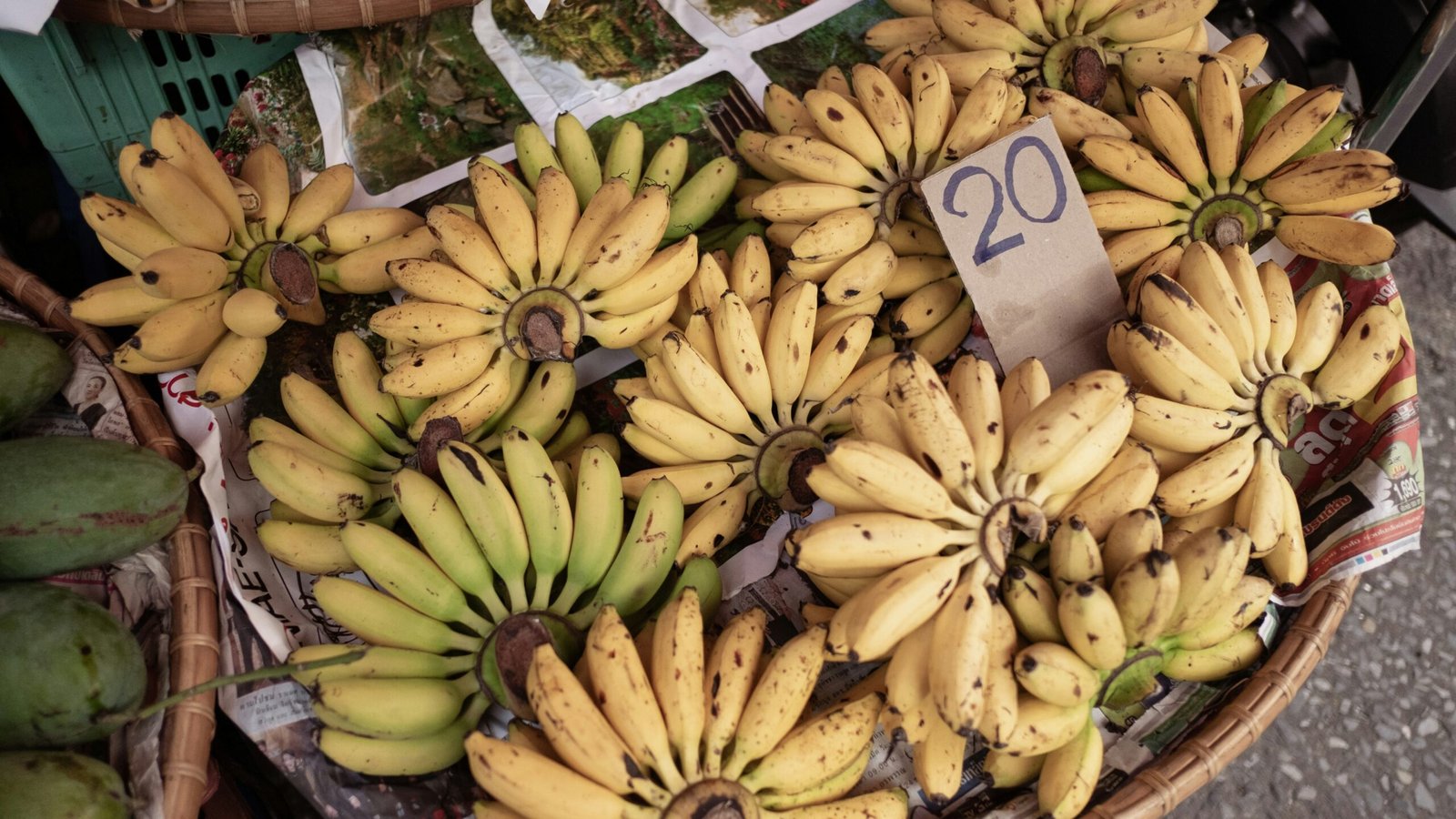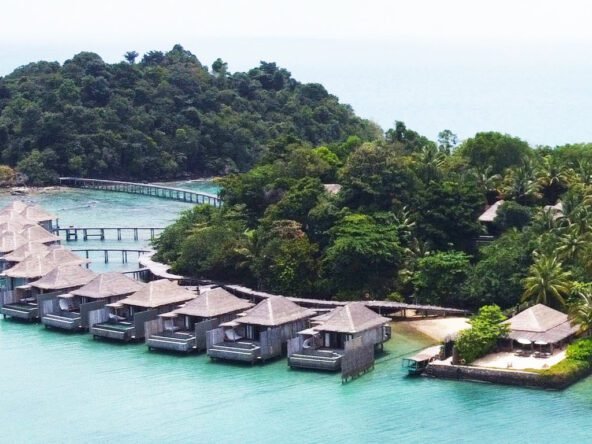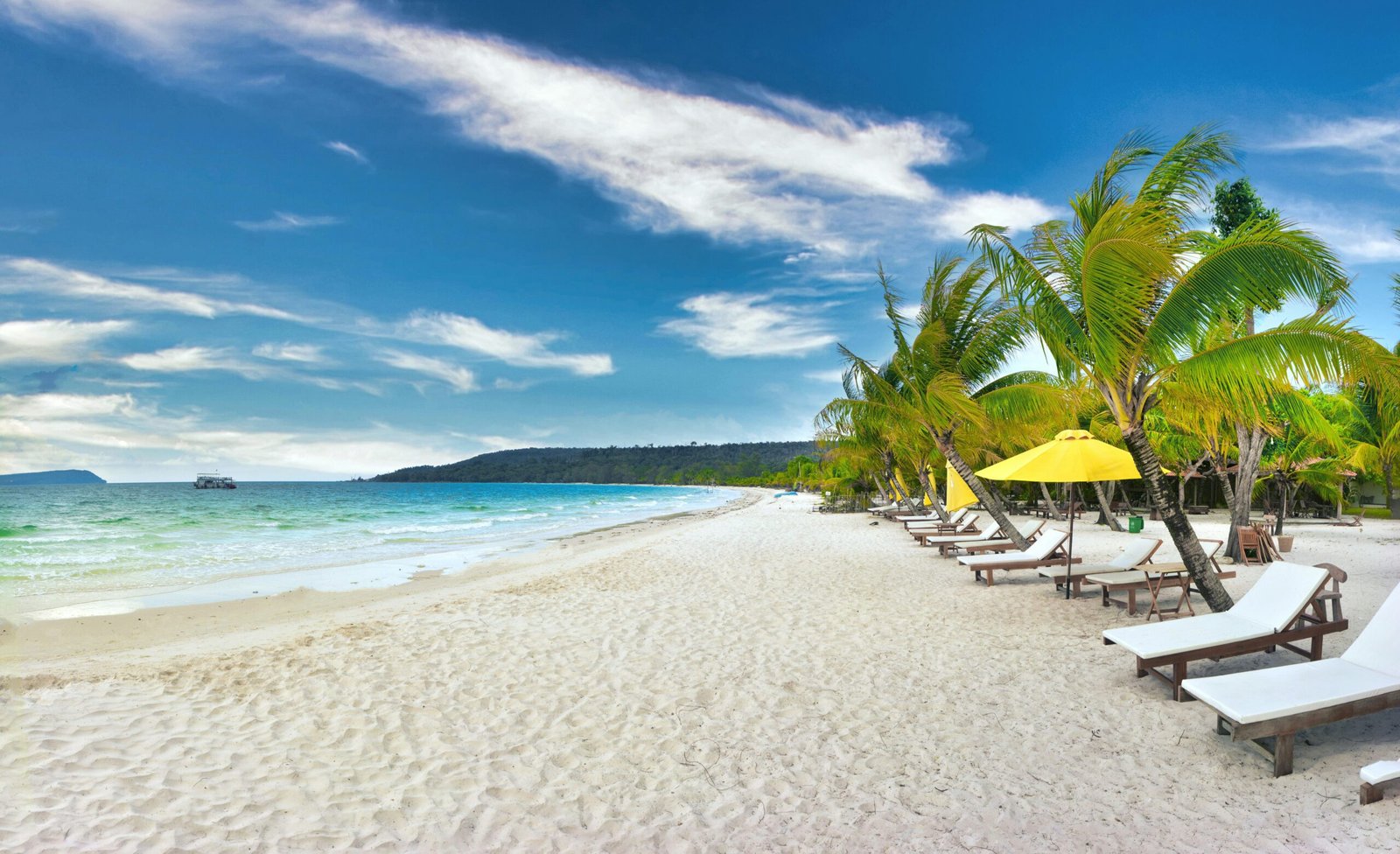Introduction to Cost of Living in Southeast Asia
Cost of Living Comparison: Cambodia, Vietnam, Thailand, and Laos – The concept of cost of living is a crucial consideration for expatriates, digital nomads, and travelers alike. It encompasses the amount of money needed to sustain a certain standard of living in a specific location. Understanding the cost of living is essential for making informed decisions when relocating or planning extended stays abroad. Southeast Asia, with its diverse cultures, rich histories, and varying economic landscapes, offers a range of living costs that can significantly impact one’s experience and financial planning.
Cambodia, Vietnam, Thailand, and Laos are among the most popular destinations in Southeast Asia for expats and tourists. Each of these countries offers unique attractions and lifestyles, making them appealing options for those seeking new experiences. Cambodia is known for its historical sites, including the iconic Angkor Wat, and its relatively low cost of living. Vietnam boasts bustling cities like Hanoi and Ho Chi Minh City, as well as picturesque landscapes such as Halong Bay. Thailand, often referred to as the “Land of Smiles,” is famous for its vibrant street life, beautiful beaches, and hospitable locals. Laos, with its serene environment and slower pace of life, offers a tranquil retreat for those looking to escape the hustle and bustle of modern cities.
The cost of living in these Southeast Asian countries is influenced by several key factors. Economic conditions play a significant role, as they determine the general price levels of goods and services. Currency exchange rates also impact how far one’s money can go when converting from their home currency. Additionally, lifestyle choices, such as accommodation preferences, dining habits, and recreational activities, can lead to significant variations in individual expenses. Understanding these factors can help expatriates and travelers better plan their budgets and manage their finances while enjoying the unique offerings of Cambodia, Vietnam, Thailand, and Laos.
Housing and Accommodation Costs
When comparing housing and accommodation costs among Cambodia, Vietnam, Thailand, and Laos, several factors come into play, including the type of housing, location, and associated utilities. Each country offers a variety of living arrangements, from apartments and houses to shared accommodations, catering to diverse preferences and budgets.
In Cambodia, the cost of housing varies significantly between urban and rural areas. In Phnom Penh, the capital city, a one-bedroom apartment in the city center averages around $500 to $700 per month. For a similar apartment outside the city center, the cost drops to approximately $300 to $500 per month. Utilities, including electricity, water, and internet, typically add another $100 to $150 to monthly expenses.
Vietnam offers a broader range of options, particularly in Ho Chi Minh City and Hanoi. In Ho Chi Minh City, a one-bedroom apartment in the city center costs between $500 and $800 per month, while outside the city center, prices range from $300 to $500. Utilities in major Vietnamese cities are relatively affordable, with monthly costs for electricity, water, and internet averaging around $70 to $120.
Thailand, known for its popularity among expatriates, presents a diverse housing market, especially in Bangkok. A one-bedroom apartment in central Bangkok can cost between $600 and $1,000 per month. Conversely, outside the city center, similar accommodations range from $300 to $500. Utility costs in Bangkok, including high-speed internet, typically add $100 to $150 to monthly living expenses.
In Laos, the housing market is more modest. In Vientiane, the capital, a one-bedroom apartment in the city center averages around $400 to $600 per month, while outside the city center, the cost decreases to $200 to $400. Utility costs in Laos are generally lower, with monthly expenses for electricity, water, and internet averaging between $50 and $100.
Overall, the cost of housing and accommodation varies widely across Cambodia, Vietnam, Thailand, and Laos, influenced by location, housing type, and additional utility expenses. Prospective residents should consider these factors when planning their move to ensure they find suitable and affordable living arrangements.
Food and Dining Expenses
When comparing the cost of food and dining in Cambodia, Vietnam, Thailand, and Laos, you’ll find notable variations influenced by local culinary traditions and economic factors. Groceries in Cambodia generally tend to be moderately priced. Fresh produce, rice, and local meats are affordable, with an average monthly grocery bill for a small family around $150 to $200. In contrast, Vietnam offers slightly lower grocery prices, with a similar basket costing around $120 to $170, thanks to its extensive local agriculture and competitive market.
Thailand’s grocery costs are comparable to Cambodia’s, with an average monthly expenditure of $160 to $210, reflecting its mix of local and imported goods. Meanwhile, Laos, being less developed, has higher prices for certain food items, particularly imported goods, placing the monthly grocery bill around $180 to $230.
Street food is an essential aspect of the dining culture in these countries, offering affordable and delicious meals. In Cambodia, popular dishes like Amok and Lok Lak can be enjoyed for as little as $1 to $2. Vietnam’s famed Pho and Banh Mi are similarly priced, ranging from $1 to $2.50. Thai street food, such as Pad Thai and Som Tum, costs about $1.50 to $3, while in Laos, dishes like Laap and Khao Niew are available for $2 to $3.50.
Dining in local restaurants offers a budget-friendly alternative to home cooking. A meal in a mid-range restaurant in Cambodia typically costs $4 to $8 per person, whereas similar dining experiences in Vietnam are slightly cheaper, ranging from $3 to $7. Thailand’s diverse culinary scene sees meals priced between $5 to $10, and in Laos, expect to pay around $6 to $9.
International dining is generally more expensive. In Cambodia, an international meal might cost $8 to $15, aligning closely with Vietnam’s $7 to $14 range. Thailand’s vibrant international restaurant scene sees prices from $10 to $20, while Laos, with fewer international options, ranges from $9 to $17.
Imported food items and beverages significantly impact overall food costs. Cambodia and Laos, relying heavily on imports, see higher prices for these items. Vietnam and Thailand, with better-developed supply chains, offer slightly more affordable options. For example, a bottle of imported wine might cost $12 to $20 in Cambodia and Laos, while in Vietnam and Thailand, it ranges from $10 to $18.
Transportation Costs
When evaluating transportation costs in Cambodia, Vietnam, Thailand, and Laos, it’s essential to consider various modes of transport and their associated expenses. Public transportation is generally affordable in these countries, with buses, trains, and metro systems offering budget-friendly options for daily commuting and travel.
In Cambodia, public buses are the primary mode of transportation, with fares typically ranging from $0.25 to $1 per ride. Motorbike taxis, known as “motodops,” are also popular and cost around $1 to $2 for short distances. Ride-sharing services like Grab are available in major cities, with prices comparable to motodops. Owning a vehicle in Cambodia is less common due to high import taxes, but for those who do, fuel prices average around $1 per liter, and insurance and maintenance costs are relatively low.
Vietnam offers an extensive network of buses and trains, with bus fares starting at $0.30 and train tickets varying based on distance and class. The metro system in Hanoi and Ho Chi Minh City is expanding, with fares expected to be around $0.30 to $0.50 per journey. Motorbike rentals are prevalent, costing approximately $5 to $10 per day, while owning a motorbike involves fuel costs of about $0.80 per liter, along with affordable insurance and maintenance. Ride-sharing services like Grab and Be are widely used, providing convenient and economical transportation options.
Thailand boasts a well-developed public transportation system, including buses, skytrains, and metro systems. Bus fares generally range from $0.30 to $1.50, while skytrain and metro tickets cost between $0.50 and $1.50 per ride. Taxis and ride-sharing services such as Grab are readily available, with fares starting at $1 for short trips. Motorbike rentals are common, with daily rates of $5 to $10. For vehicle owners, fuel prices average around $1 per liter, with moderate insurance and maintenance expenses.
In Laos, public transportation is less developed, but buses and shared minivans are available, with fares typically ranging from $0.50 to $2. Tuk-tuks and motorbike taxis are popular for short distances, costing around $1 to $3. Ride-sharing services are limited, with most people relying on traditional taxis. Motorbike rentals range from $8 to $15 per day, while owning a motorbike involves fuel costs of approximately $1.10 per liter and relatively low insurance and maintenance costs.
Overall, transportation costs in Cambodia, Vietnam, Thailand, and Laos are generally affordable, with public transportation and motorbike rentals being the most economical options. Vehicle ownership is feasible but comes with additional expenses such as fuel, insurance, and maintenance, which vary slightly across the countries.
Healthcare and Medical Expenses
When considering the cost of living in Cambodia, Vietnam, Thailand, and Laos, healthcare and medical expenses are crucial factors. Each country offers distinct healthcare systems, varying significantly in terms of quality, accessibility, and cost.
In Cambodia, the healthcare system is still developing, with a mix of public and private facilities. Routine medical check-ups are relatively affordable, usually costing between $20 to $50. However, specialist consultations can be more expensive, ranging from $30 to $100. Hospital stays in private hospitals can cost anywhere from $100 to $200 per day. Medications are widely available, with prices comparable to Western countries. Dental care is relatively inexpensive, with routine cleanings costing around $20 to $30. Alternative treatments such as traditional Khmer medicine are also available at relatively low costs.
Vietnam offers a more developed healthcare system, with a mix of public and private hospitals. Routine medical check-ups typically cost between $10 to $30, while specialist consultations range from $20 to $70. Hospital stays in private facilities can cost between $50 to $150 per day. Medications are generally affordable and widely available. Dental care is reasonably priced, with cleanings costing around $10 to $25. Alternative treatments, including traditional Vietnamese medicine and acupuncture, are popular and affordable.
Thailand boasts one of the most advanced healthcare systems in Southeast Asia, attracting medical tourists worldwide. Routine medical check-ups are affordable, costing between $30 to $60. Specialist consultations range from $50 to $100. Hospital stays in private hospitals can be more expensive, costing between $200 to $500 per day. Medications are readily available and reasonably priced. Dental care is of high quality, with routine cleanings costing around $30 to $50. Alternative treatments, such as Thai traditional medicine and massage therapy, are also widely available.
Laos has a less developed healthcare system compared to its neighbors. Routine medical check-ups are inexpensive, typically costing between $10 to $20. Specialist consultations range from $20 to $50. Hospital stays in private facilities can cost between $30 to $100 per day. Medications are available but may be more expensive and less varied than in neighboring countries. Dental care is affordable, with routine cleanings costing around $10 to $20. Alternative treatments, including traditional Lao medicine and herbal remedies, are accessible and economical.
Health insurance is essential for expatriates living in these countries. The cost of health insurance plans varies based on coverage and provider. In Cambodia, basic plans can start from $500 per year, while comprehensive plans may cost up to $2,000. In Vietnam, annual premiums range from $300 to $1,500. Thailand’s health insurance can cost between $400 to $2,500 per year, depending on the coverage. In Laos, expatriates can expect to pay between $200 and $1,200 annually. It’s important to choose a plan that covers routine medical expenses, hospital stays, and emergency care.
Entertainment and Leisure Costs
The cost of entertainment and leisure activities varies significantly across Cambodia, Vietnam, Thailand, and Laos, reflecting each country’s unique cultural landscape and economic conditions. In Cambodia, visiting tourist attractions such as Angkor Wat can be relatively affordable, with entrance fees averaging around $37 per day. Cultural events, like traditional dance performances, typically cost between $10 to $15. Outdoor sports, such as kayaking or cycling, can be enjoyed for a modest fee of $5 to $20 depending on the location and duration.
Vietnam offers a diverse range of entertainment options at competitive prices. Entrance fees to popular tourist sites like Ha Long Bay are approximately $15. Cultural experiences, including water puppet shows, usually range from $5 to $10. For outdoor enthusiasts, activities such as hiking in Sapa can cost anywhere from $10 to $30, depending on whether you opt for guided tours.
Thailand, known for its vibrant nightlife and rich cultural heritage, presents a varied spectrum of entertainment costs. Movie tickets in major cities like Bangkok are around $6 to $10, while gym memberships can range from $30 to $50 per month. Nightlife options, including clubs and bars, generally charge entrance fees between $10 to $20. Outdoor activities like scuba diving in Phuket are more expensive, averaging $70 to $120 for a day trip.
In Laos, entertainment and leisure activities are generally more affordable. Visiting tourist attractions such as the Kuang Si Falls costs about $2. Cultural events, like traditional Lao music performances, have entrance fees ranging from $5 to $8. Outdoor activities, such as trekking in Luang Prabang, can be enjoyed for $10 to $25. Gym memberships in urban areas like Vientiane typically cost around $20 to $30 per month.
Hobbies and recreational activities also present varying costs across these countries. In Cambodia, yoga classes are priced at approximately $8 per session, while cooking classes can range from $20 to $30. Vietnam offers more affordable options, with yoga classes around $5 per session and cooking classes between $15 to $25. Thailand’s yoga classes are priced similarly to Cambodia’s, and cooking classes range from $25 to $50. In Laos, yoga classes are generally $5 to $7 per session, and cooking classes are around $20 to $30.
Overall, the cost of entertainment and leisure activities in Cambodia, Vietnam, Thailand, and Laos varies widely, reflecting each country’s unique offerings and economic conditions. Whether you’re interested in cultural events, outdoor sports, or hobbies, each destination provides a range of options to suit different budgets.
Education and Childcare Expenses
The cost of education and childcare varies significantly across Cambodia, Vietnam, Thailand, and Laos, influenced by factors such as the quality of institutions, the level of education, and the availability of extracurricular activities. Understanding these expenses is crucial for families considering relocation to these countries.
In Cambodia, international schools can be quite expensive, with annual fees ranging from $5,000 to $20,000. Local schools are significantly cheaper, costing between $200 and $1,000 per year. Private tutoring services are also available, with rates averaging $10 to $30 per hour. Early childhood education, including daycare centers and preschools, can cost between $200 and $600 per month. Extracurricular activities, such as music lessons and sports clubs, range from $20 to $50 per session.
Vietnam offers a similar range of educational expenses. International schools typically charge between $6,000 and $18,000 annually. Local schools are more affordable, with fees ranging from $100 to $1,200 per year. Private tutoring in Vietnam costs approximately $8 to $25 per hour. Daycare centers and preschools charge around $150 to $500 monthly. For extracurricular activities, parents can expect to pay between $15 and $45 per session.
Thailand tends to have higher education costs compared to Cambodia and Vietnam. International schools in Thailand can cost anywhere from $8,000 to $30,000 per year. Local schools are less expensive, with annual fees between $300 and $2,000. Private tutoring services charge around $12 to $35 per hour. Early childhood education, including daycare and preschools, costs between $250 and $700 per month. Extracurricular activities such as language classes, music, and sports clubs can range from $25 to $60 per session.
In Laos, the cost of education is generally lower than in the other three countries. International schools charge between $4,000 and $15,000 annually. Local school fees range from $50 to $800 per year. Private tutoring services are available at rates of $7 to $20 per hour. Daycare centers and preschools cost around $100 to $400 per month. Extracurricular activities, including music lessons and sports clubs, typically cost between $10 and $40 per session.
Overall, the cost of education and childcare in Cambodia, Vietnam, Thailand, and Laos varies widely, influenced by the type of institution and the services offered. Families should consider these factors when planning their relocation to ensure they can provide quality education and activities for their children within their budget.
Overall Quality of Life and Affordability
When evaluating the overall quality of life and affordability in Cambodia, Vietnam, Thailand, and Laos, several factors come into play. Safety is a primary consideration for expatriates. Generally, Thailand and Vietnam are perceived as safer compared to Cambodia and Laos, with well-established infrastructure and healthcare systems. However, all four countries present a welcoming and hospitable environment.
The climate across these nations is tropical, with hot and humid conditions prevalent throughout the year. Thailand and Vietnam benefit from extensive coastlines, offering more opportunities for beachside living, which is highly appealing to expatriates. Cambodia, with its rich historical sites like Angkor Wat, and Laos, known for its serene landscapes, provide unique cultural experiences.
In terms of cultural amenities, Thailand and Vietnam stand out due to their bustling cities that feature a plethora of dining, shopping, and entertainment options. Bangkok, Ho Chi Minh City, and Hanoi are hubs of activity and offer modern conveniences alongside traditional charm. Cambodia and Laos, while less developed, offer a slower pace of life and are often preferred by those seeking tranquility.
Expat communities are vibrant across these countries, with Thailand and Vietnam having the largest and most diverse expatriate populations. This offers new residents a supportive network and easier integration into local life. Cambodia and Laos, though having smaller expat communities, provide a close-knit environment where forming meaningful connections is often easier.
From an affordability standpoint, Laos and Cambodia tend to be less expensive in terms of daily living costs compared to Thailand and Vietnam. However, Thailand and Vietnam offer a more extensive range of services and amenities, potentially justifying the higher costs for some. Housing, transportation, and food are generally affordable across these countries, though the cost can vary significantly based on lifestyle and location.
Personal experiences from expatriates highlight the importance of budget management. Simple practices such as shopping at local markets, using public transportation, and embracing local cuisine can lead to significant savings. Many expats recommend immersing oneself in the local culture to gain a deeper appreciation of the lifestyle and to make the most of the financial benefits of living in Southeast Asia.





